Among the pandemic’s many side effects, it created a unique capacity to force even the most august institutions to experience identity crises and growing pains. And in the film industry, perhaps no organization has felt this syndrome more acutely than the Sundance Institute.
“We have to look back at how do we sustain Sundance, for the future,” Michelle Satter, director of Sundance Institute’s Feature Film Program, told me. “We’re in a moment of stepping back and making tough decisions. You have to prioritize, and build back.”
After longtime festival director John Cooper left in 2020, Sundance veteran Tabitha Jackson took over; she stepped down June 7 and the festival now seeks a new leader. Sundance Institute CEO Keri Putnam left in 2021; Joana Vicente, who helped guide the Toronto International Film Festival during the pandemic, is now tasked with putting Sundance on its feet. Two years of a virtual Sundance Film Festival came at tremendous cost: The institute’s most recent financial statements show program revenue between 2020 and 2021 dropped nearly 50 percent, from $15.9 million to $8.3 million.
The Sundance labs — those storied, weeks-long retreats at founder Robert Redford’s Sundance Mountain Resort high in Utah’s Wasatch Mountains — were also virtual experiences for the last two years. Unlike the festival, however, the resource-intensive labs represent pure expense on the balance sheet. In April, the Institute folded its Interdisciplinary and Film Music programs; it also laid off seven full-time staffers. The two-week screenwriting lab — one week each in January and June — still remains virtual.
All of that helps to explain why Satter made the unusual decision to invite me to visit its in-person Directors Lab earlier this month. With so much else in flux, she welcomed a witness to the mentor workshops she launched with Redford back in 1981. He’s often told the labs’ origin story, about how he saw the need to counterbalance studios with a support system for indies, starting with these labs. While the festival makes the most noise, the labs are the heartbeat of the Sundance ethos.
“I have always believed in the power of story and independent voices,” Redford wrote the Sundance fellows. “The lab process is at the core of our mission, and I encourage you all to immerse yourselves fully. Put story first as you pursue your vision.”
The alumnae made the labs famous, ranging from Quentin Tarantino (1991) to Chloé Zhao(2012), and Taika Waititi (2005) to Marielle Heller (2012). Many of them, like Marvel director Ryan Coogler, still turn to Satter for feedback, or return to the labs as advisors.
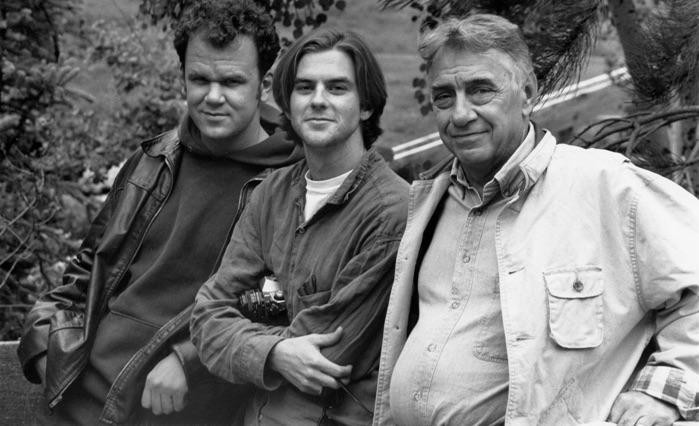
Paul Thomas Anderson at the 1993 Lab with John C. Reilly and Philip Baker Hall, three years before he made “Hard Eight”
© 2016 Sundance Institute | Photo by Sandria Miller
Satter and lieutenant Ilyse McKimmie’s team of seven never stop trawling for potential fellows and advisors. Satter chased down Paul Thomas Anderson at Sundance 1993 after seeing his short “Cigarettes and Coffee” and invited him to the summer Directors Lab. “Do you have a script?” she said. He lied and said he did, but he wasn’t the only Sundance directing fellow to write one on deadline. He brought “Sydney,” which later became “Hard Eight.” Satter invited John Cameron Mitchell to the Directors Lab after she saw “Hedwig & the Angry Inch” off Broadway, but he didn’t wanted to direct himself. She brought in Tom Kalin to direct two scenes, asked Mitchell to do the third, and the rest is history.
During the pandemic, the labs attracted 3,000-3,500 applications; this year they returned to the usual 2,000-2,500. Sundance kept the Screenwriters Labs in January and June virtual, which work well on Zoom and will likely become the new normal. But the Directors Lab “thrives when we can be together,” Satter said. It’s now two weeks instead of three, but its standard eight directing fellows each shot two scenes and shared four volunteer film crews.
“Something has to be said about Michelle Satter,” said 2022 fellow Dina Amer, an Egyptian writer-producer (“Cain and Abel”). “This woman is not from this world: she has a gentle strength to preserving and caring about each and every one of us, and believing in us. She puts all of this together, so that we feel like we’re empowered to tell stories. It changes the world to believe that. It gives me chills.”
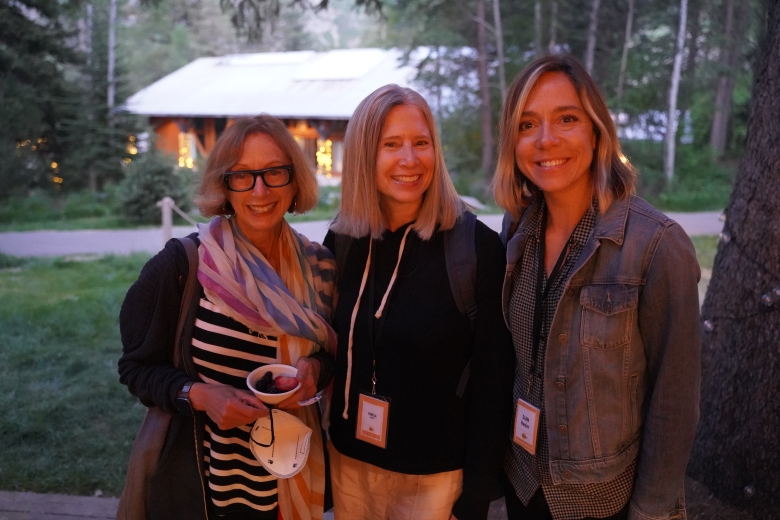
Michelle Satter, Pamela Martin, and Sian Heder at the 2022 Directors Lab
Tammie Rosen/ Sundance Directors Lab
Lab volunteers return every chance they get. Matthew Gowan, a production assistant on films like “Once Upon a Time in Hollywood” and a former Satter assistant, returns as a driver. Four-time Oscar nominee Ed Harris also returned this year; he first supported the Directors Lab as an advisor back in 2002. “Oh, it’s like nothing else, truly,” he told me. “Because it’s not a school. It’s not rigid. Bob really put his money where his mouth is.
“You come here, and first of all, you can’t be in a bad mood,” he said. “You can’t. Your ego can’t be anywhere near you. This is all about listening, giving, and you receive a lot from doing that. The other advisors — cinematographers, editors, directors, other actor-directors — when we talk about what’s going on with all the fellows, you’re always picking up stuff. It helps you to articulate what you know, or what you don’t know, when you’re dealing with the fellows. And you’re trying to help them solve a problem, whatever it might be, with an actor, with a camera angle, or just dealing on the set with your crew. You can’t help but learn.”
Advisors learn quickly: Don’t tell a fellow what to do or how to do it. “You might say, ‘Hey, what if this, or what if that?,'” said Harris. “You ask proper questions, to have the director come up with trying to find the solutions. People hear about it and they say, ‘It sounds like it’s like Scientology, or some kind of rah-rah-let’s-all-be-happy place.’ Because the world doesn’t exist for awhile. It’s just about the work, period. It’s just trying to help people make the films they are trying to make in the best way possible.”
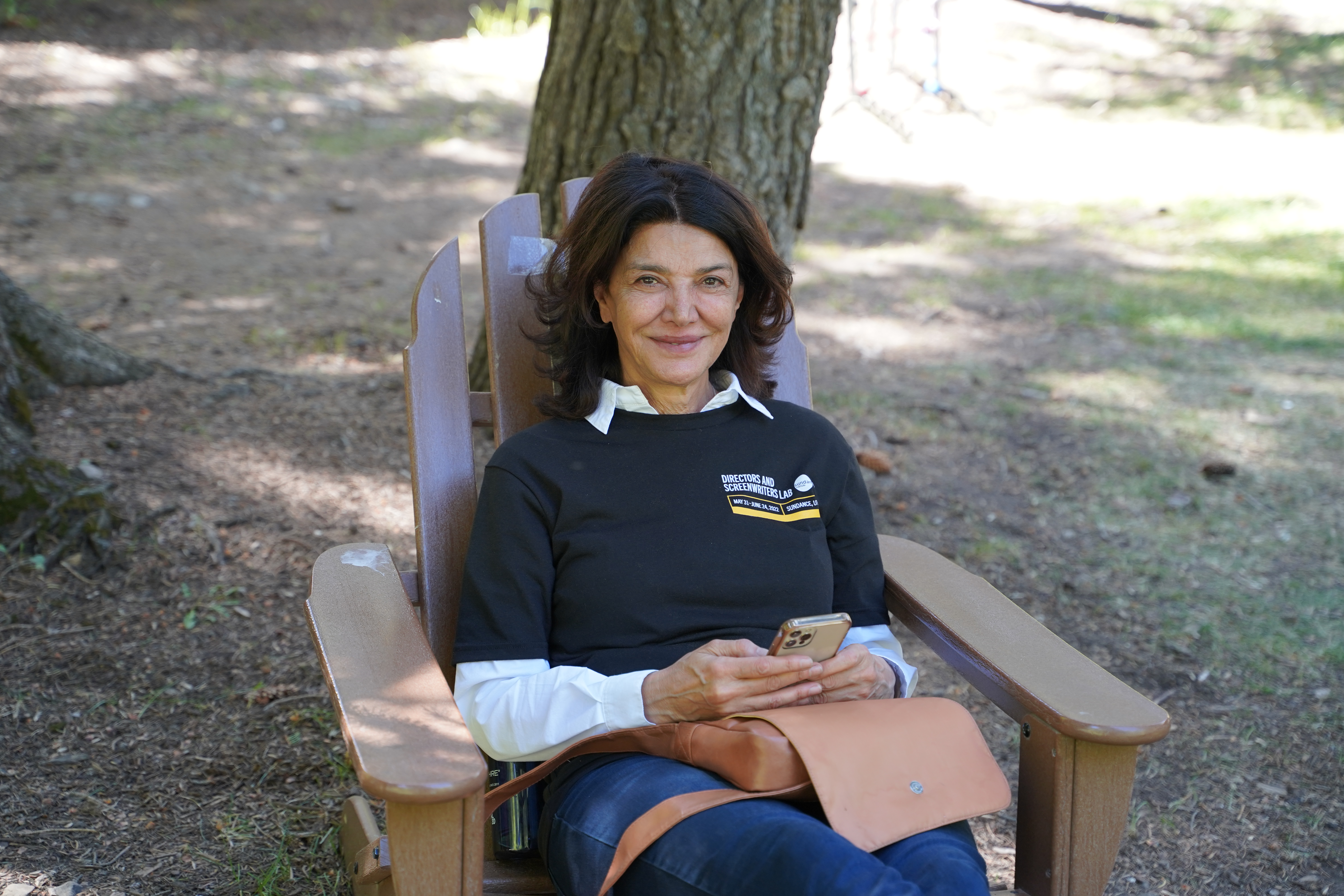
Shohreh Aghdashloo at the 2022 Sundance Directors Lab
Tammie Rosen/Sundance Directors Lab
The Sundance casting directors reached out to Iranian-American actress Shohreh Aghdashloo (“The House of Sand and Fog”) to act in Iraq emigre and recent NYU grad Hasan Hadi’s “The President’s Cake,” about a schoolboy during the Saddam Hussein regime who asks his grandmother to help him fulfill the onerous assignment of baking the cake to celebrate the leader’s birthday. Aghdashloo was exhausted after finishing two movies back-to-back, but agreed to read the script. It inspired a panic attack.
“My heart is pumping, my palms are sweating,” she said. “And I just left the script, opened the window, and started breathing heavily. I try to think of what brought me to this point. And all of a sudden, oh my God, everything that I was trying to run away from, forty-odd something years ago, is catching up with me. This story is being told so sweetly, so beautifully, that you want to see what happens next. So I went back to it. And I finished it. I wrote to my agent, ‘I feel obliged to do it because I know no one else in the U.S. can do this; he needs me.’ As soon as I got back from the U.K., I basically changed suitcases and came here.”
Hadi is grateful. “I study and teach at NYU,” he said. “I never heard from any faculty that we are here to train your instincts. Here you come with an idea, with a blurred vision, and it becomes much clearer in two weeks because the spirit is so generous, from advisors to crew.”
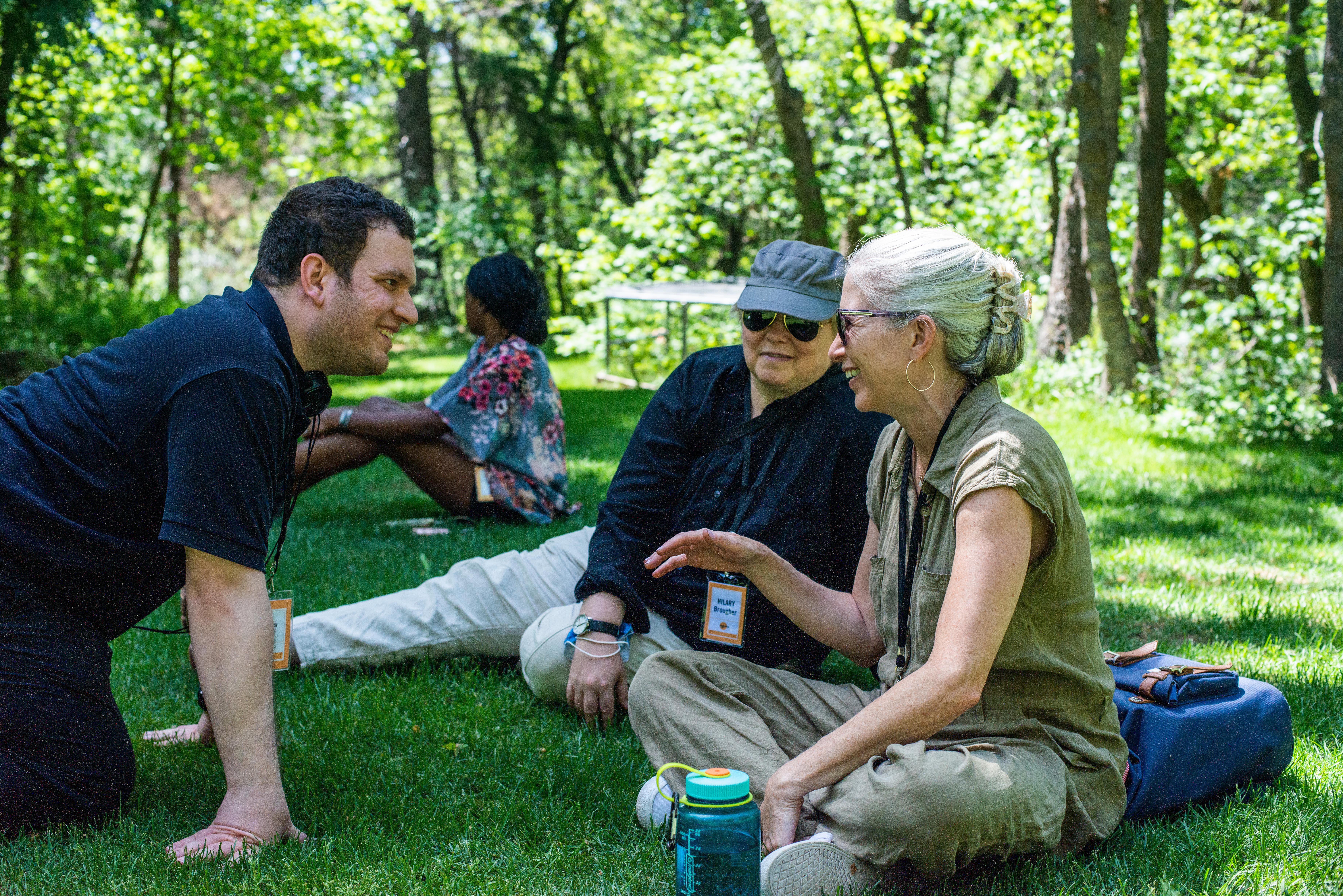
Fellow Hasan Hadi with Hilary Brougher and Pamela Martin on the set of “The President’s Cake”
Jonathan Hickerson
“I want to remind everyone that this is a lab,” Satter said on the evening when the group gathered to screen their first scenes. “What is more important than what you see on the screen is what was discovered and learned in the process. Hold on to that and bring your most generous self to watching these accomplished first things. When we get into the lab, it’s about risk-taking. We asked all of our fellows to choose the most challenging scenes on their screenplay. Remember that we also asked people to push their boundaries as directors. That’s what the lab is about for us: learning and discovery.”
There’s a lot of people in the room, including more than 40 crew members and 20 actors. Satter thanks them all, including the eight fellows and their advisors, including cinematographer Adriano Goldman (“Sin Nombre”); Oscar winner Sian Heder, whose “CODA” debuted at Sundance 2021; “King Richard” Oscar-nominated editor Pamela Martin; and Columbia film professor and one-time fellow Hilary Brougher (“Stephanie Daley”). Satter tells the fellows, “This is an extraordinary support system that you have, year-round.”
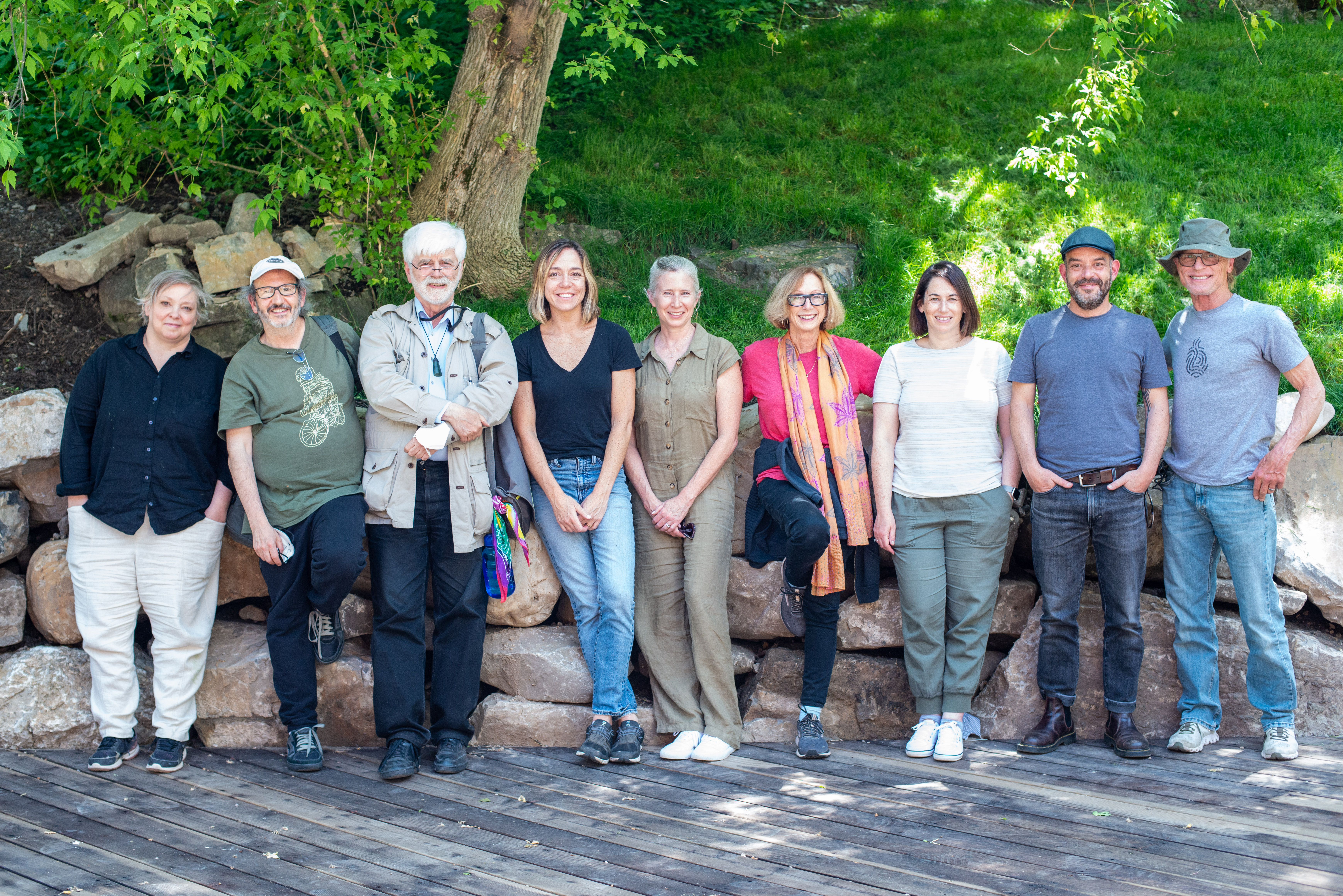
Sundance Directors Lab advisors Hilary Brougher, Keith Gordon, Gyula Gazdag, Sian Heder, Pamela Martin, Michelle Satter, Ilyse McKimmie, Adriano Goldman, and Ed Harris
Jonathan Hickerson
Over ice cream afterward, Heder told me that she distracted herself after the Oscars by jumping into showrunning her Apple TV+ series “Little America,” but abandoned the editing room for three days to attend the lab. She meets Caledonia Curry, a visual artist known in New York art circles as Swoon. Curry is gobsmacked by how her scene from “Sybilant Sisters,” which she envisioned as a fairy tale fable, played more intensely than she expected. She’ll take this with her into tomorrow’s rehearsals for Scene 2.
“It’s like, you get your perfectionism out of the way,” said Curry. “What are you gonna finish? Just do this stuff and learn things and take the risk because there is not a finished product that you’re aiming for. Just iterate, iterate, make, go do it, and and then let it go.”
At next morning’s advisors’ meeting, Satter runs through all eight projects, getting updates from advisors who visited sets and editing rooms or had lunch with the fellows. Heder is curious about how much to weigh in on set. She could easily apply her skills to dissect a scene, but sees that it’s more useful to help the fellows figure out their own problems, or even to fail.
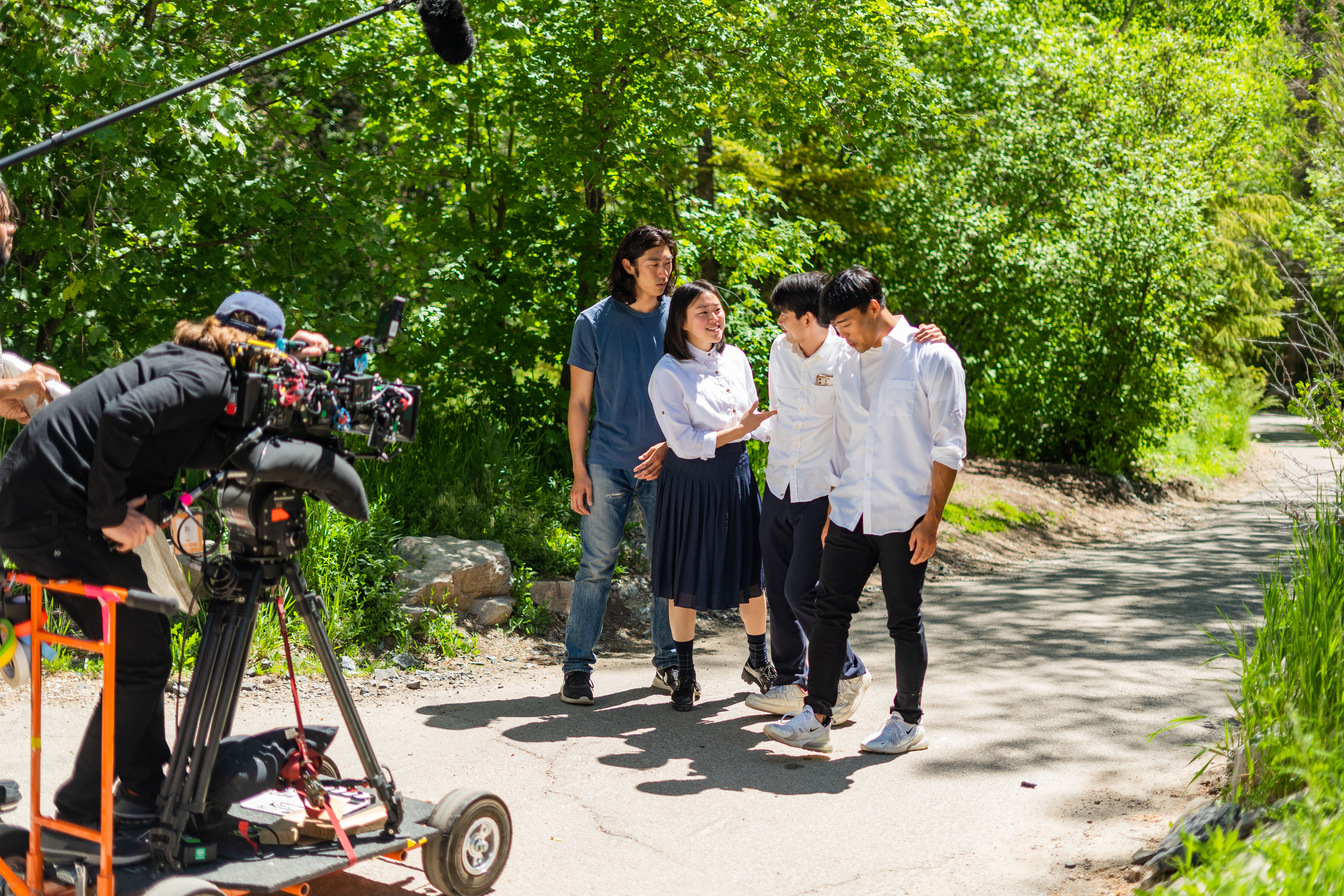
Filming Neo Sora’s “Earthquake” at the 2022 Sundance Directors Lab
Ash Gerlach/ Sundance Directors Lab
“If we did one-on-one mentoring the whole time, you’d fall into the dangerous weird God-teacher thing,” said veteran TV director Keith Gordon. “Or they just start listening to somebody: ‘OK, tell me what to do.’ But by keeping it mixed up with different points of view, having an Ed Harris one day, a cinematographer the next day, a director the next day, they’re getting all sorts of different stuff. It makes it about them.”
Gordon crouched behind a video monitor as Tokyo-based Neo Sora, who applied to the Lab four times before getting accepted, shoots a long take for “Earthquake.” He shot his first scene in Japanese, the second in English. Each fellow has one day of rehearsal, one day to shoot, and one day to edit each scene.
“It is rigorous, in terms of how many hours they get,” said Gordon. “They do have a lot of constraints, but within that it’s really about what’s going to serve you best. What are you going to learn the most from? This is a chance to get back to why all of us got into films and filmmaking and storytelling. Most of the time in our lives, when you’re out in the ‘real world,’ you’re worried with the budgets, making your days, and raising the money for your projects. I always joke, ‘I’m a professional fundraiser who directs as a hobby.’ Here, it’s just about storytelling. And you’re with these young filmmakers who are so passionate and haven’t yet had to slog through the business and are not beaten down. It’s inspiring and energizing. It’s a film summer camp Wonderland. Every time I come, I go: ‘Oh, that’s why I wanted to do this.'”
Chinese fellow Yuan Yuan (“Late Spring”) told me she participated in another, non-Sundance workshop last year, but “It was always about teaching you who your audience is, and how much is the budget?,” she said. “Maybe if your target is commercial audiences, you need to add more action to make it lean into the market. If you’re doing an art film, it would be good to cut down the budget and make it more arty. But in the Directors Lab, nobody ever asked me those questions. Zero. All the conversation was about who is the character, what is their relationship? I feel like I’m going back to childhood, and why I want to make movies. [At the other workshop] I was questioning why I want to be a director. Here, I find the purity.”
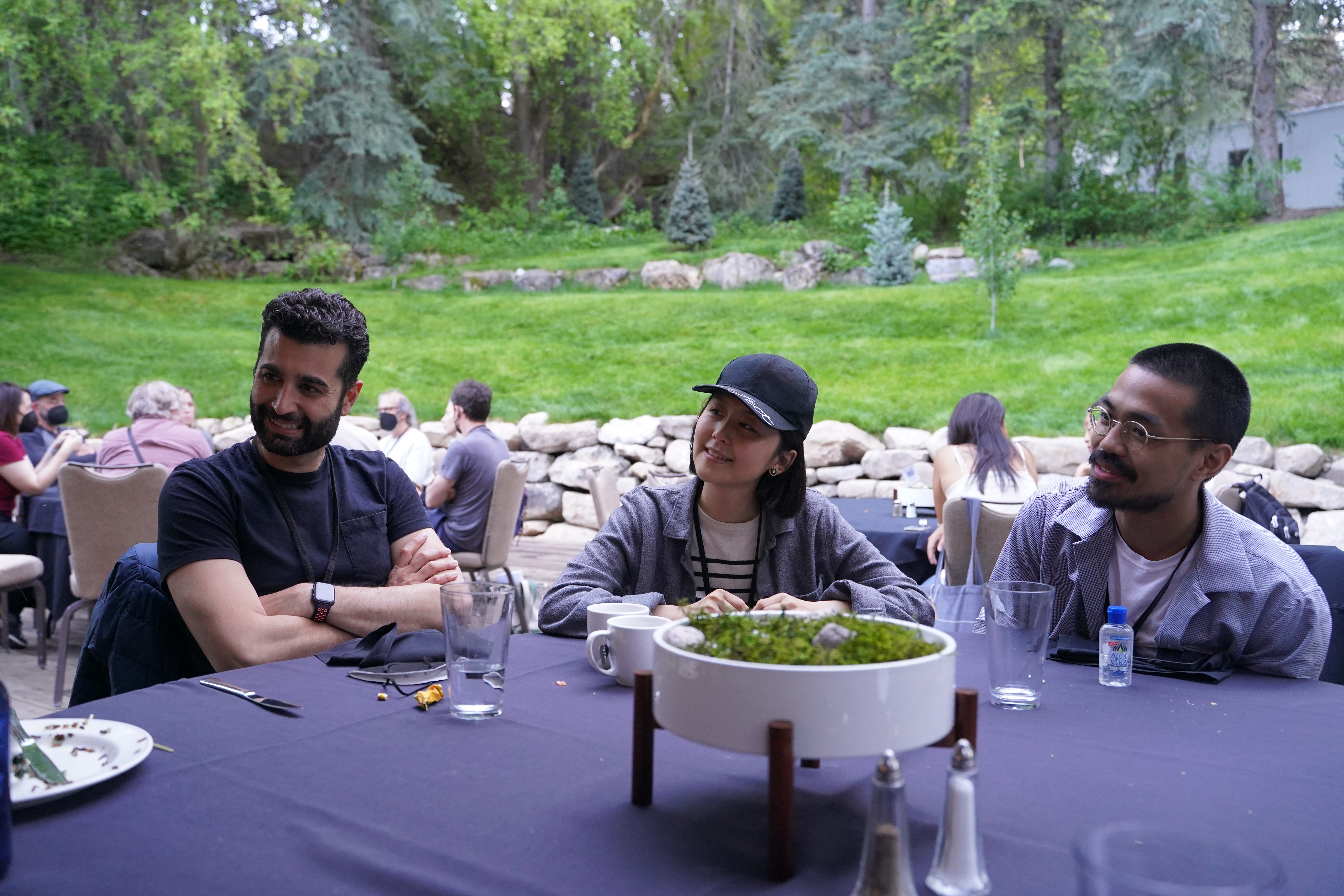
Fellows Michael León, Yuan Yuan, and Neo Sora at the Sundance Directors Lab 2022
Tammie Rosen/ Sundance Directors Lab
Science nerd Eliza McNitt, who brought the Darren Aronofsky-backed VR short “Spheres” to Sundance 2018, is running on fumes. The day before, believing that she was fully prepped for rehearsals for “Black Hole,” “Ed Harris came in the room and looked at the scene, and took me aside and told me, ‘Sit the actors down, have them run the lines, and just watch what happens.’ I did that exercise, and suddenly realized that the entire point of the scene was not physical distance, but emotions,” she said. “And to achieve that was not to send the actors away from each other, but rather to force them to stand in a circle and make them squirm and to see that on their faces. That totally unraveled my plan that I had worked on many weeks before I came here. When I showed up on set, I had nothing prepared that I had been thinking about and yet felt more deeply connected to the actors and the material.”
McNitt added, “The point is to be so exhausted, that you are working on your instincts. I keep telling everyone that I got Sundanced.”
The Sundancing is far from over. When the fellows leave the Sundance Resort bubble, they return home and a week later continue the bonding over Zoom with the Screenwriters Lab. After that, they carry these experiences and relationships forward and can ask for help from Satter and her extended team at any time.
“If cinema is a temple,” said Hadi, “Sundance is that small corner room that filmmakers can go, confess their weaknesses, embrace their fears, open themselves up, and come out like a new fresh filmmaker who is excited. Not many people get guided to that. Only the blessed ones.”
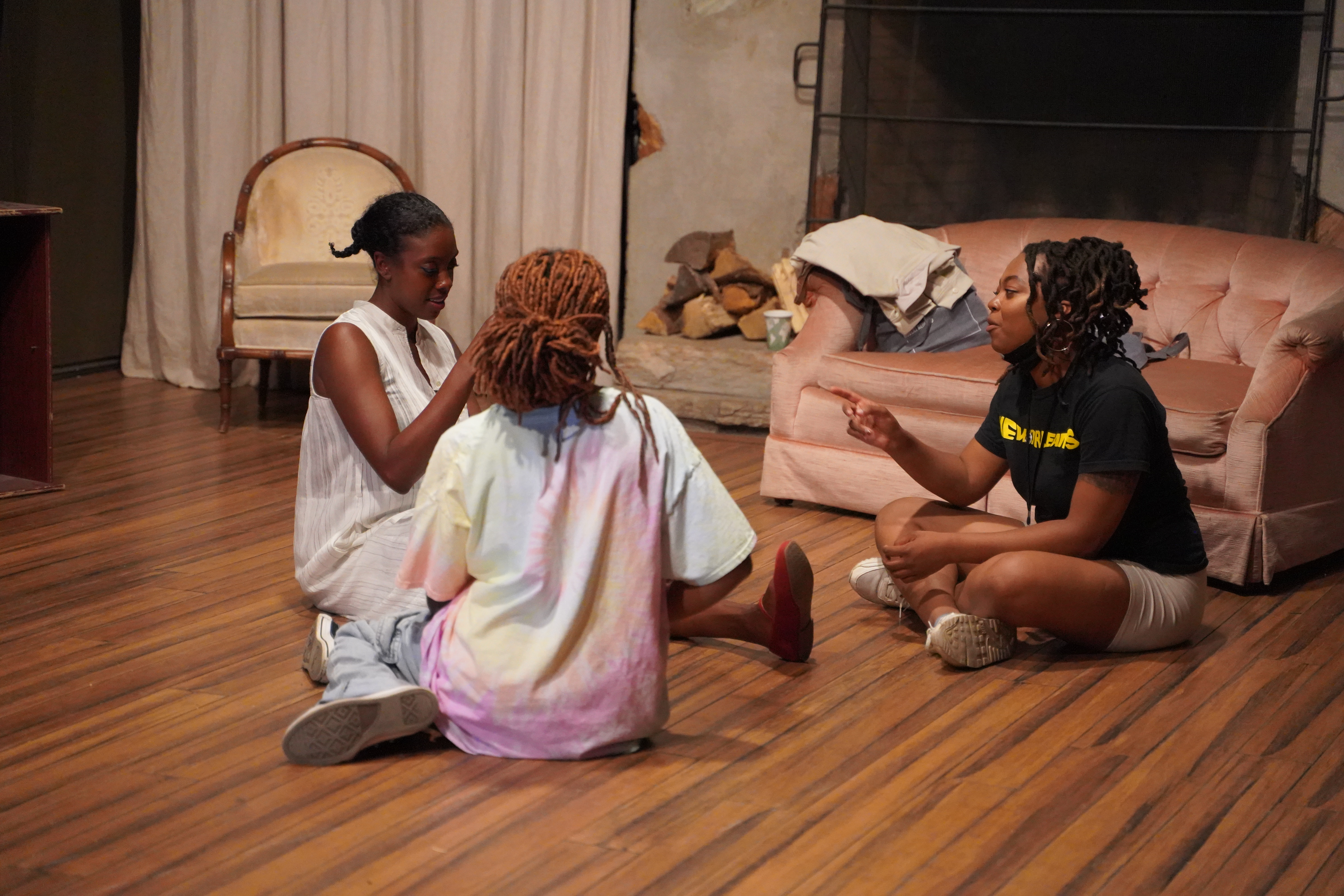
New Orleans filmmaker Zandashé Brown rehearses “The Matriarch” with Condola Rashad and Riele Downs
Tammie Rosen/Sundance Directors Lab
Directors Lab Fellows and Projects
“Black Hole” (U.S.A.)
Eliza McNitt
writer/director
“Cain and Abel” (U.S.A./France/Egypt)
Dina Amer
writer/director
“Crabs in a Barrel” (U.S.A.)
Michael León
co-writer/director
Ashley Alvarez
co-writer
“Earthquake” (U.S.A./Japan)
Neo Sora
writer/director
“Late Spring” (U.S.A./China)
Yuan Yuan
writer/director
“The Matriarch” (U.S.A.)
Zandashé Brown
writer/director
“The President’s Cake” (U.S.A./Iraq)
Hasan Hadi
writer/director
“Sibylant Sisters” (U.S.A.)
Caledonia Curry
director
Meagan Brothers
writer
“We have to look back at how do we sustain Sundance, for the future,” Michelle Satter, director of Sundance Institute’s Feature Film Program, told me. “We’re in a moment of stepping back and making tough decisions. You have to prioritize, and build back.”
After longtime festival director John Cooper left in 2020, Sundance veteran Tabitha Jackson took over; she stepped down June 7 and the festival now seeks a new leader. Sundance Institute CEO Keri Putnam left in 2021; Joana Vicente, who helped guide the Toronto International Film Festival during the pandemic, is now tasked with putting Sundance on its feet. Two years of a virtual Sundance Film Festival came at tremendous cost: The institute’s most recent financial statements show program revenue between 2020 and 2021 dropped nearly 50 percent, from $15.9 million to $8.3 million.
The Sundance labs — those storied, weeks-long retreats at founder Robert Redford’s Sundance Mountain Resort high in Utah’s Wasatch Mountains — were also virtual experiences for the last two years. Unlike the festival, however, the resource-intensive labs represent pure expense on the balance sheet. In April, the Institute folded its Interdisciplinary and Film Music programs; it also laid off seven full-time staffers. The two-week screenwriting lab — one week each in January and June — still remains virtual.
All of that helps to explain why Satter made the unusual decision to invite me to visit its in-person Directors Lab earlier this month. With so much else in flux, she welcomed a witness to the mentor workshops she launched with Redford back in 1981. He’s often told the labs’ origin story, about how he saw the need to counterbalance studios with a support system for indies, starting with these labs. While the festival makes the most noise, the labs are the heartbeat of the Sundance ethos.
“I have always believed in the power of story and independent voices,” Redford wrote the Sundance fellows. “The lab process is at the core of our mission, and I encourage you all to immerse yourselves fully. Put story first as you pursue your vision.”
The alumnae made the labs famous, ranging from Quentin Tarantino (1991) to Chloé Zhao(2012), and Taika Waititi (2005) to Marielle Heller (2012). Many of them, like Marvel director Ryan Coogler, still turn to Satter for feedback, or return to the labs as advisors.

Paul Thomas Anderson at the 1993 Lab with John C. Reilly and Philip Baker Hall, three years before he made “Hard Eight”
© 2016 Sundance Institute | Photo by Sandria Miller
Satter and lieutenant Ilyse McKimmie’s team of seven never stop trawling for potential fellows and advisors. Satter chased down Paul Thomas Anderson at Sundance 1993 after seeing his short “Cigarettes and Coffee” and invited him to the summer Directors Lab. “Do you have a script?” she said. He lied and said he did, but he wasn’t the only Sundance directing fellow to write one on deadline. He brought “Sydney,” which later became “Hard Eight.” Satter invited John Cameron Mitchell to the Directors Lab after she saw “Hedwig & the Angry Inch” off Broadway, but he didn’t wanted to direct himself. She brought in Tom Kalin to direct two scenes, asked Mitchell to do the third, and the rest is history.
During the pandemic, the labs attracted 3,000-3,500 applications; this year they returned to the usual 2,000-2,500. Sundance kept the Screenwriters Labs in January and June virtual, which work well on Zoom and will likely become the new normal. But the Directors Lab “thrives when we can be together,” Satter said. It’s now two weeks instead of three, but its standard eight directing fellows each shot two scenes and shared four volunteer film crews.
“Something has to be said about Michelle Satter,” said 2022 fellow Dina Amer, an Egyptian writer-producer (“Cain and Abel”). “This woman is not from this world: she has a gentle strength to preserving and caring about each and every one of us, and believing in us. She puts all of this together, so that we feel like we’re empowered to tell stories. It changes the world to believe that. It gives me chills.”

Michelle Satter, Pamela Martin, and Sian Heder at the 2022 Directors Lab
Tammie Rosen/ Sundance Directors Lab
Lab volunteers return every chance they get. Matthew Gowan, a production assistant on films like “Once Upon a Time in Hollywood” and a former Satter assistant, returns as a driver. Four-time Oscar nominee Ed Harris also returned this year; he first supported the Directors Lab as an advisor back in 2002. “Oh, it’s like nothing else, truly,” he told me. “Because it’s not a school. It’s not rigid. Bob really put his money where his mouth is.
“You come here, and first of all, you can’t be in a bad mood,” he said. “You can’t. Your ego can’t be anywhere near you. This is all about listening, giving, and you receive a lot from doing that. The other advisors — cinematographers, editors, directors, other actor-directors — when we talk about what’s going on with all the fellows, you’re always picking up stuff. It helps you to articulate what you know, or what you don’t know, when you’re dealing with the fellows. And you’re trying to help them solve a problem, whatever it might be, with an actor, with a camera angle, or just dealing on the set with your crew. You can’t help but learn.”
Advisors learn quickly: Don’t tell a fellow what to do or how to do it. “You might say, ‘Hey, what if this, or what if that?,'” said Harris. “You ask proper questions, to have the director come up with trying to find the solutions. People hear about it and they say, ‘It sounds like it’s like Scientology, or some kind of rah-rah-let’s-all-be-happy place.’ Because the world doesn’t exist for awhile. It’s just about the work, period. It’s just trying to help people make the films they are trying to make in the best way possible.”

Shohreh Aghdashloo at the 2022 Sundance Directors Lab
Tammie Rosen/Sundance Directors Lab
The Sundance casting directors reached out to Iranian-American actress Shohreh Aghdashloo (“The House of Sand and Fog”) to act in Iraq emigre and recent NYU grad Hasan Hadi’s “The President’s Cake,” about a schoolboy during the Saddam Hussein regime who asks his grandmother to help him fulfill the onerous assignment of baking the cake to celebrate the leader’s birthday. Aghdashloo was exhausted after finishing two movies back-to-back, but agreed to read the script. It inspired a panic attack.
“My heart is pumping, my palms are sweating,” she said. “And I just left the script, opened the window, and started breathing heavily. I try to think of what brought me to this point. And all of a sudden, oh my God, everything that I was trying to run away from, forty-odd something years ago, is catching up with me. This story is being told so sweetly, so beautifully, that you want to see what happens next. So I went back to it. And I finished it. I wrote to my agent, ‘I feel obliged to do it because I know no one else in the U.S. can do this; he needs me.’ As soon as I got back from the U.K., I basically changed suitcases and came here.”
Hadi is grateful. “I study and teach at NYU,” he said. “I never heard from any faculty that we are here to train your instincts. Here you come with an idea, with a blurred vision, and it becomes much clearer in two weeks because the spirit is so generous, from advisors to crew.”

Fellow Hasan Hadi with Hilary Brougher and Pamela Martin on the set of “The President’s Cake”
Jonathan Hickerson
“I want to remind everyone that this is a lab,” Satter said on the evening when the group gathered to screen their first scenes. “What is more important than what you see on the screen is what was discovered and learned in the process. Hold on to that and bring your most generous self to watching these accomplished first things. When we get into the lab, it’s about risk-taking. We asked all of our fellows to choose the most challenging scenes on their screenplay. Remember that we also asked people to push their boundaries as directors. That’s what the lab is about for us: learning and discovery.”
There’s a lot of people in the room, including more than 40 crew members and 20 actors. Satter thanks them all, including the eight fellows and their advisors, including cinematographer Adriano Goldman (“Sin Nombre”); Oscar winner Sian Heder, whose “CODA” debuted at Sundance 2021; “King Richard” Oscar-nominated editor Pamela Martin; and Columbia film professor and one-time fellow Hilary Brougher (“Stephanie Daley”). Satter tells the fellows, “This is an extraordinary support system that you have, year-round.”

Sundance Directors Lab advisors Hilary Brougher, Keith Gordon, Gyula Gazdag, Sian Heder, Pamela Martin, Michelle Satter, Ilyse McKimmie, Adriano Goldman, and Ed Harris
Jonathan Hickerson
Over ice cream afterward, Heder told me that she distracted herself after the Oscars by jumping into showrunning her Apple TV+ series “Little America,” but abandoned the editing room for three days to attend the lab. She meets Caledonia Curry, a visual artist known in New York art circles as Swoon. Curry is gobsmacked by how her scene from “Sybilant Sisters,” which she envisioned as a fairy tale fable, played more intensely than she expected. She’ll take this with her into tomorrow’s rehearsals for Scene 2.
“It’s like, you get your perfectionism out of the way,” said Curry. “What are you gonna finish? Just do this stuff and learn things and take the risk because there is not a finished product that you’re aiming for. Just iterate, iterate, make, go do it, and and then let it go.”
At next morning’s advisors’ meeting, Satter runs through all eight projects, getting updates from advisors who visited sets and editing rooms or had lunch with the fellows. Heder is curious about how much to weigh in on set. She could easily apply her skills to dissect a scene, but sees that it’s more useful to help the fellows figure out their own problems, or even to fail.

Filming Neo Sora’s “Earthquake” at the 2022 Sundance Directors Lab
Ash Gerlach/ Sundance Directors Lab
“If we did one-on-one mentoring the whole time, you’d fall into the dangerous weird God-teacher thing,” said veteran TV director Keith Gordon. “Or they just start listening to somebody: ‘OK, tell me what to do.’ But by keeping it mixed up with different points of view, having an Ed Harris one day, a cinematographer the next day, a director the next day, they’re getting all sorts of different stuff. It makes it about them.”
Gordon crouched behind a video monitor as Tokyo-based Neo Sora, who applied to the Lab four times before getting accepted, shoots a long take for “Earthquake.” He shot his first scene in Japanese, the second in English. Each fellow has one day of rehearsal, one day to shoot, and one day to edit each scene.
“It is rigorous, in terms of how many hours they get,” said Gordon. “They do have a lot of constraints, but within that it’s really about what’s going to serve you best. What are you going to learn the most from? This is a chance to get back to why all of us got into films and filmmaking and storytelling. Most of the time in our lives, when you’re out in the ‘real world,’ you’re worried with the budgets, making your days, and raising the money for your projects. I always joke, ‘I’m a professional fundraiser who directs as a hobby.’ Here, it’s just about storytelling. And you’re with these young filmmakers who are so passionate and haven’t yet had to slog through the business and are not beaten down. It’s inspiring and energizing. It’s a film summer camp Wonderland. Every time I come, I go: ‘Oh, that’s why I wanted to do this.'”
Chinese fellow Yuan Yuan (“Late Spring”) told me she participated in another, non-Sundance workshop last year, but “It was always about teaching you who your audience is, and how much is the budget?,” she said. “Maybe if your target is commercial audiences, you need to add more action to make it lean into the market. If you’re doing an art film, it would be good to cut down the budget and make it more arty. But in the Directors Lab, nobody ever asked me those questions. Zero. All the conversation was about who is the character, what is their relationship? I feel like I’m going back to childhood, and why I want to make movies. [At the other workshop] I was questioning why I want to be a director. Here, I find the purity.”

Fellows Michael León, Yuan Yuan, and Neo Sora at the Sundance Directors Lab 2022
Tammie Rosen/ Sundance Directors Lab
Science nerd Eliza McNitt, who brought the Darren Aronofsky-backed VR short “Spheres” to Sundance 2018, is running on fumes. The day before, believing that she was fully prepped for rehearsals for “Black Hole,” “Ed Harris came in the room and looked at the scene, and took me aside and told me, ‘Sit the actors down, have them run the lines, and just watch what happens.’ I did that exercise, and suddenly realized that the entire point of the scene was not physical distance, but emotions,” she said. “And to achieve that was not to send the actors away from each other, but rather to force them to stand in a circle and make them squirm and to see that on their faces. That totally unraveled my plan that I had worked on many weeks before I came here. When I showed up on set, I had nothing prepared that I had been thinking about and yet felt more deeply connected to the actors and the material.”
McNitt added, “The point is to be so exhausted, that you are working on your instincts. I keep telling everyone that I got Sundanced.”
The Sundancing is far from over. When the fellows leave the Sundance Resort bubble, they return home and a week later continue the bonding over Zoom with the Screenwriters Lab. After that, they carry these experiences and relationships forward and can ask for help from Satter and her extended team at any time.
“If cinema is a temple,” said Hadi, “Sundance is that small corner room that filmmakers can go, confess their weaknesses, embrace their fears, open themselves up, and come out like a new fresh filmmaker who is excited. Not many people get guided to that. Only the blessed ones.”

New Orleans filmmaker Zandashé Brown rehearses “The Matriarch” with Condola Rashad and Riele Downs
Tammie Rosen/Sundance Directors Lab
Directors Lab Fellows and Projects
“Black Hole” (U.S.A.)
Eliza McNitt
writer/director
“Cain and Abel” (U.S.A./France/Egypt)
Dina Amer
writer/director
“Crabs in a Barrel” (U.S.A.)
Michael León
co-writer/director
Ashley Alvarez
co-writer
“Earthquake” (U.S.A./Japan)
Neo Sora
writer/director
“Late Spring” (U.S.A./China)
Yuan Yuan
writer/director
“The Matriarch” (U.S.A.)
Zandashé Brown
writer/director
“The President’s Cake” (U.S.A./Iraq)
Hasan Hadi
writer/director
“Sibylant Sisters” (U.S.A.)
Caledonia Curry
director
Meagan Brothers
writer


